Modifications like installing 35-inch tires can make a huge difference in improving your Jeep. These changes enhance performance and appearance but also present challenges.
If you’re running 35-inch tires on your Jeep, regearing is often necessary to restore power and improve performance. While some Jeeps may handle 35s without issues, regearing with a 4.56 ratio is recommended for optimal driving.
In this guide, you’ll explore why regearing is necessary when upgrading to 35-inch tires and how to do it right.
Why Jeep Modifications Matter
Jeep modifications let you personalize your ride, improving performance and making it fit your adventures. Whether for off-roading or daily drives, the right upgrades, like bigger tires or regearing, can completely transform your driving experience.
Importance Of Understanding Regearing
Regearing affects your Jeep’s performance, especially with larger tires. Understanding it helps you avoid issues like poor power or fuel economy. It’s key to keeping your Jeep reliable and ready for roads and trails.
Overview Of Running 35-Inch Tires
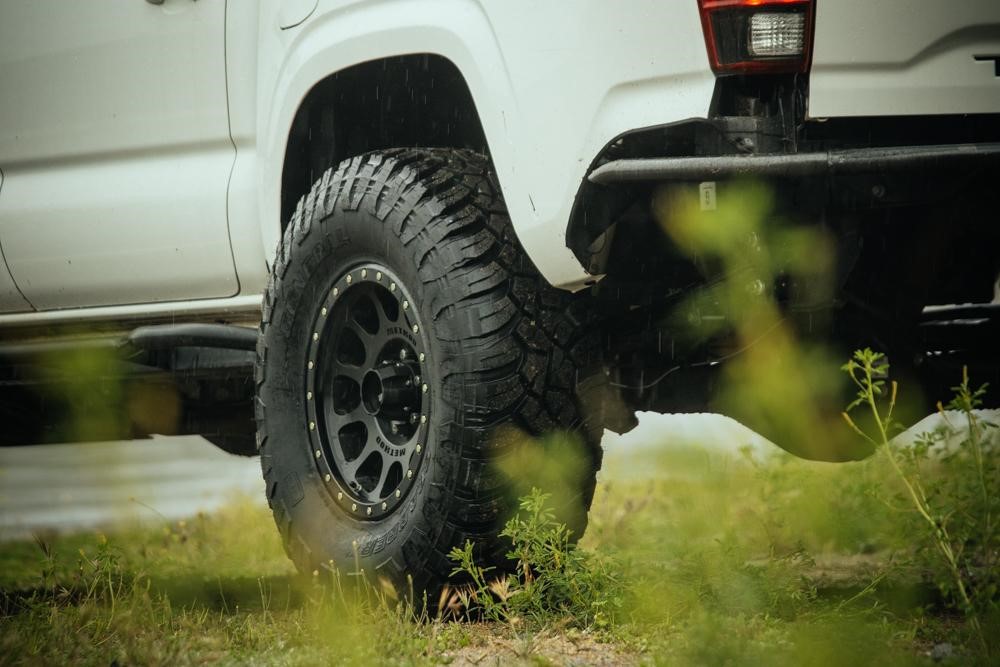
35-inch tires give your Jeep better off-road capability, extra ground clearance, and an aggressive look. However, they also add weight, which can strain your engine and drivetrain if you don’t adjust like regearing.
Also Read: Jeep Wrangler Pulls To The Right When Braking
What Does Regearing Mean?
1. Definition Of Regearing
Regearing is swapping out your Jeep’s differential gears for a new ratio. This helps your Jeep handle changes like bigger tires, restoring lost power, and making your vehicle perform as intended.
2. Purpose Of Regearing For Jeeps
Regearing ensures your Jeep keeps its power, fuel efficiency, and reliability after modifications. It balances the added weight and size of upgrades like 35-inch tires, preventing strain on your engine and drivetrain.
Why Install 35-Inch Tires?
1. Aesthetic Appeal
35-inch tires give your Jeep a bold, aggressive look that stands out. They instantly make your vehicle feel more rugged and ready for any adventure, whether hitting the trails or driving around town.
2. Improved Off-Road Performance
Larger tires mean better traction and control on rough terrain. 35-inch tires let your Jeep easily handle mud, rocks, and steep trails, making them a favorite choice for off-road enthusiasts.
3. Increased Ground Clearance
With 35-inch tires, your Jeep sits higher off the ground, allowing you to tackle obstacles like rocks and logs without getting stuck. The extra clearance also helps protect your vehicle’s underside from damage.
Read Now: Can Jeep Unlock My Car Remotely
Challenges Of Using 35-Inch Tires Without Regearing
1. Reduced Power And Acceleration
Bigger tires require more energy to move, making your Jeep feel sluggish. Without regearing, you’ll lose low-end power, making it harder to accelerate, climb hills, or maintain speed on the highway.
2. Strain On The Engine And Transmission
35-inch tires add extra weight and resistance, forcing your engine and transmission to work harder. Over time, this can lead to overheating, excessive wear, and expensive repairs if the gearing isn’t adjusted.
3. Poor Fuel Economy
Without regearing, larger tires reduce your Jeep’s fuel efficiency. The engine burns more gas trying to power the heavier tires, which means fewer miles per gallon and higher costs at the pump.
How Regearing Helps
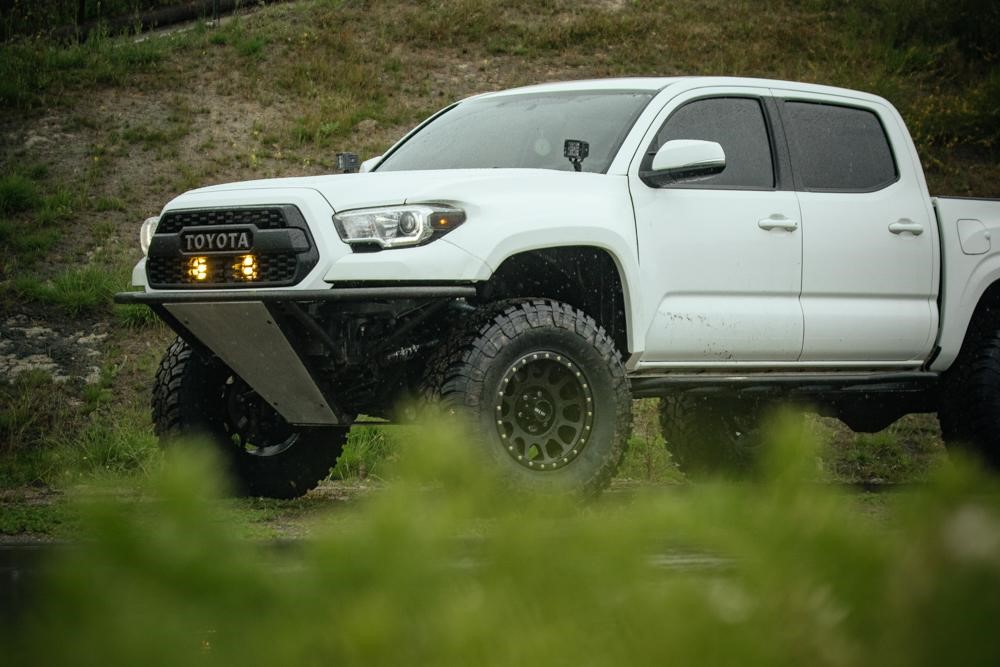
1. Restores Lost Power
Regearing restores the power lost with larger tires. It allows your Jeep to accelerate smoothly, handle hills easily, and perform as well as before upgrading to 35-inch tires, improving your driving experience.
2. Optimizes Fuel Efficiency
Regearing helps your Jeep use fuel more efficiently by matching the gear ratio to your tire size. It reduces the strain on the engine, giving you better mileage and saving you money at the pump.
3. Reduces Wear And Tear On Components
Without regearing, bigger tires overwork your Jeep’s engine, transmission, and drivetrain. Regearing reduces this strain, helping these parts last longer and preventing expensive repairs.
Factors To Consider Before Regearing
1. Your Jeep’s Current Gear Ratio
Some Jeeps have gear ratios that better handle 35-inch tires than others. Check your current ratio. This will help you decide if regearing is necessary or if your Jeep can manage without immediate changes.
2. Driving Habits (Off-Road Vs. Highway)
Are you mostly on highways or tearing up trails? Off-road drivers benefit more from regearing due to the extra torque needed. Highway drivers might delay it, but they’ll still see better performance with the right gear ratio.
3. Budget For Regearing
Regearing can cost $1,500–$3,000, depending on your Jeep and mechanic. While it’s an investment, it saves money by improving fuel economy and reducing wear on expensive parts, making it worth every penny.
Read It: How Long Does Remote Start Stay On Jeep
How To Determine If You Need To Regear
1. Symptoms Of Improper Gear Ratio
- Slow Acceleration: The engine struggles to turn the larger tires, causing sluggish takeoff.
- Difficulty Climbing Hills: Lack of power or torque makes it hard to ascend inclines.
- Underpowered Feel: The Jeep feels weak or unresponsive, especially in off-road conditions.
- Increased Fuel Consumption: The engine works harder to move the larger tires, reducing fuel efficiency.
- Odd RPM Behavior: RPMs may fluctuate or run higher than usual because the tires require more energy to turn.
- Inaccurate Speedometer: Larger tires cause the speedometer to read slower than the actual speed, affecting your speed readings.
If you’re noticing these issues, it’s a sign that regearing might be necessary.
2. RPM Changes And Speedometer Accuracy
Big tires throw off RPMs and speedometer readings, making your Jeep work harder and report the wrong speed. Regearing fixes these problems, bringing the RPMs and speedometer back where they should be.
Benefits Of Regearing
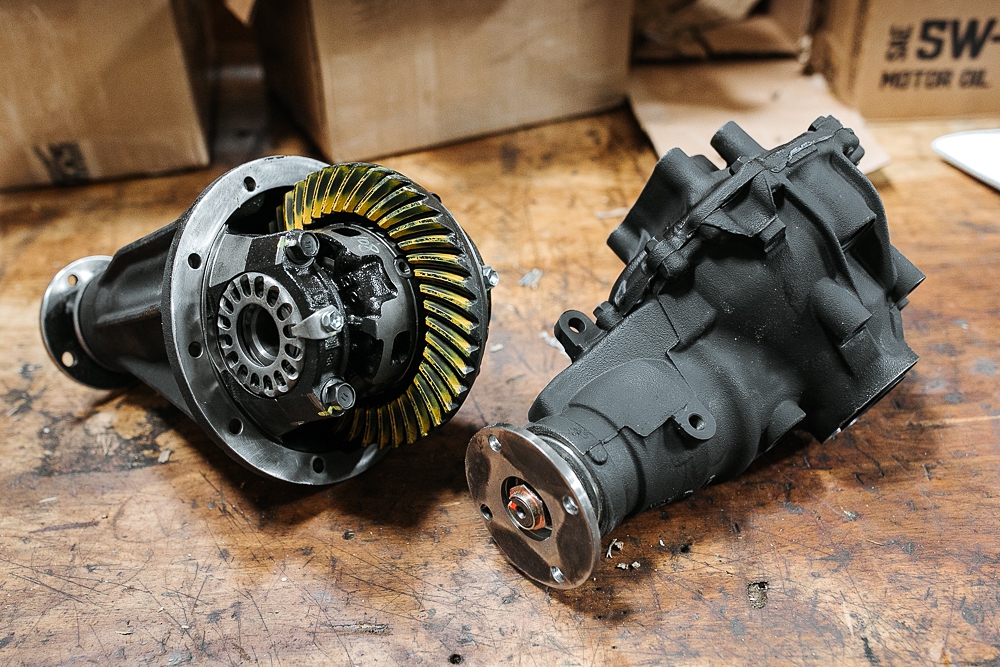
1. Enhanced Off-Road Performance
Regearing boosts low-end torque, helping your Jeep climb hills, crawl over rocks, and power through mud. It gives you the confidence to handle tough trails without straining your engine or drivetrain.
2. Smoother Driving Experience
With the right gear ratio, your Jeep accelerates and cruises effortlessly, even with larger tires. Regearing restores that smooth, responsive driving feel on highways and off-road, making driving your Jeep more enjoyable.
3. Prolonged Life Of Your Jeep’s Components
Regearing reduces strain on your engine, transmission, and drivetrain, preventing excessive wear. This protects critical components and saves you money on expensive repairs, keeping your Jeep reliable for years.
Common Gear Ratios For 35-Inch Tires
1. Popular Gear Ratios Explained
A 4.56 gear ratio balances fuel efficiency and power for mixed driving, while 4.88 provides better torque for off-roading. Both ratios work well with 35-inch tires, but your choice depends on how you drive your Jeep.
2. Matching Gear Ratios To Driving Conditions
Choose 4.56 for highway driving or 4.88 for off-road adventures. If you haul heavy loads or frequently climb hills, opt for a higher ratio. For the best results, match the gear ratio to your driving style.
Costs Of Regearing
1. Breakdown Of Regearing Costs
Parts like new rings and pinion gears cost around $300–$600 per axle. Labor adds $1,000–$2,000, depending on complexity. Some shops charge additional fees for setting up or recalibrating your speedometer. Always get a detailed quote.
2. Is It Worth The Investment?
Yes! Regearing improves performance, restores power, and prevents long-term damage to your Jeep’s engine and transmission. It’s an upfront expense but saves money in the long run and enhances your overall driving experience.
Also Read: Jeep 3.8 Oil Type – The Ultimate Guide to Engine Maintenance
Can You Drive A Jeep With 35s Without Regearing?
1. Pros And Cons Of Skipping Regearing
Skipping regearing saves money upfront but hurts performance, increases fuel costs, and stresses your Jeep’s components. While fine for occasional driving, frequent use with 35s and no regearing can lead to costly repairs later.
2. Temporary Adjustments To Compensate
If you’re not ready to regear, consider temporary fixes like recalibrating your speedometer, upgrading your transmission cooler, or driving slower speeds. These adjustments help, but they won’t fully solve the performance issues caused by bigger tires.
Diy Vs. Professional Regearing
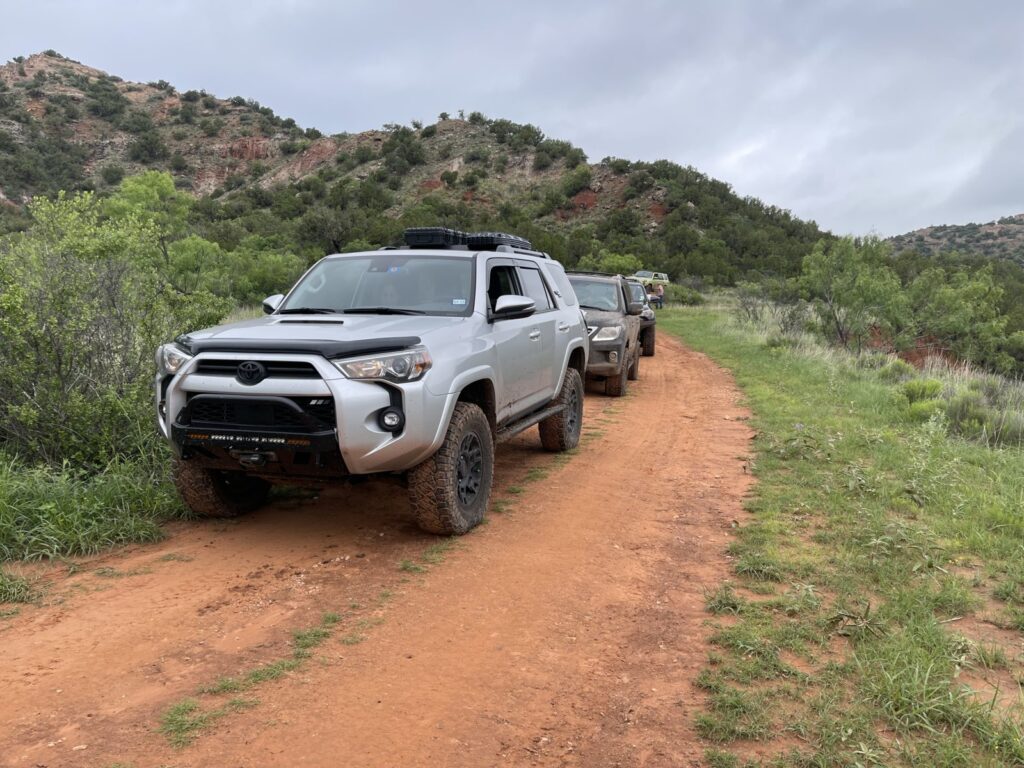
1. Complexity Of The Regearing Process
Regearing involves precise adjustments to your differential. It requires expertise, patience, and tools like torque wrenches and dial indicators. Even small mistakes can lead to gear noise, wear, or failure, making it a tricky DIY task.
2. Why Professional Help Is Often Recommended
Professionals have the skills and tools to regear correctly. They ensure proper gear alignment, minimize wear, and avoid costly mistakes. While pricier than DIY, professional help guarantees reliable performance and peace of mind.
Do I Need To Regear My Jeep With 35s 2021
Yes, if your 2021 Jeep feels sluggish or uses more fuel after installing 35s, regearing is necessary. It restores power, improves fuel efficiency, and prevents long-term damage to your engine and drivetrain.
Do I Need To Regear For 35s Tacoma?
Yes, most Tacomas need to be regeared for 35-inch tires. Larger tires reduce torque and strain the engine. Regearing ensures smooth acceleration, better fuel economy, and maintenance of the vehicle’s off-road and on-road performance.
Jeep Jl Regear For 35s
For 35-inch tires on a Jeep JL, 4.56 or 4.88 gear ratios are popular choices. Regearing restores lost power and improves performance, ensuring your JL easily handles off-road trails and highway driving.
Jeep Jk 4.56 Gears
A 4.56 gear ratio is ideal for Jeep JKs with 35-inch tires. It balances power and fuel efficiency well, improving performance without overworking the engine or drivetrain.
Jeep Regear Calculator
A Jeep regear calculator helps you find the best gear ratio based on tire size, engine type, and driving style. It’s easy to plan your regearing upgrade and ensure optimal performance.
Read More: Can You Paint A Jeep Hardtop – A Complete Guide Of 2024!
FAQs
1. Can You Fit 35s On A Stock Jk?
Yes, 35-inch tires can fit on a Jeep JK with minimal trimming. However, adding a lift kit may improve clearance and performance.
2. Can I Run 35s With 4.10 Gears?
Running 35s with 4.10 gears is possible but not ideal. You may lose power and fuel efficiency, especially off-road.
3. Can You Run 35s On A Dana 44?
Yes, the Dana 44 axle can handle 35-inch tires, but you might need to regear for better performance and longevity.
4. What Gear Ratio To Run With 35s?
Common gear ratios for 35-inch tires are 4.56 or 4.88. These ratios restore power and improve overall performance.
5. How Much Lift To Run 35s On Jk?
A 2.5 to 3.5-inch lift is typically recommended for fitting 35-inch tires on a Jeep JK without rubbing or clearance issues.
6. Do Bigger Tires Affect Gear Ratio?
Yes, bigger tires can affect your gear ratio, reducing power and causing sluggish acceleration and poor fuel economy.
7. How Much Lift Do I Need For 35 Inch Tires?
A 2.5 to 4-inch lift is ideal for fitting 35-inch tires on most Jeeps, ensuring adequate clearance and performance.
8. How Much Does It Cost To Regear A Jeep?
Regearing a Jeep typically costs between $1,500 to $3,000, depending on the gear ratio, labor, and Jeep model.
9. Can A Jeep Wrangler Handle 35 Inch Tires?
Yes, a Jeep Wrangler can handle 35-inch tires, but you may need to regear and lift it for optimal performance.
10. What Is The Best Gear Ratio For A Jeep JL With 35s?
The ideal gear ratios for a Jeep JL with 35-inch tires are 4.56 or 4.88, which balance power and fuel efficiency.
Conclusion
In conclusion, regearing your Jeep with 35-inch tires is often necessary to restore power, improve fuel efficiency, and ensure reliable performance. It helps prevent strain on your engine and drivetrain, prolonging the life of your vehicle whether off-roading or highway driving. The right gear ratio can transform your Jeep’s driving experience.

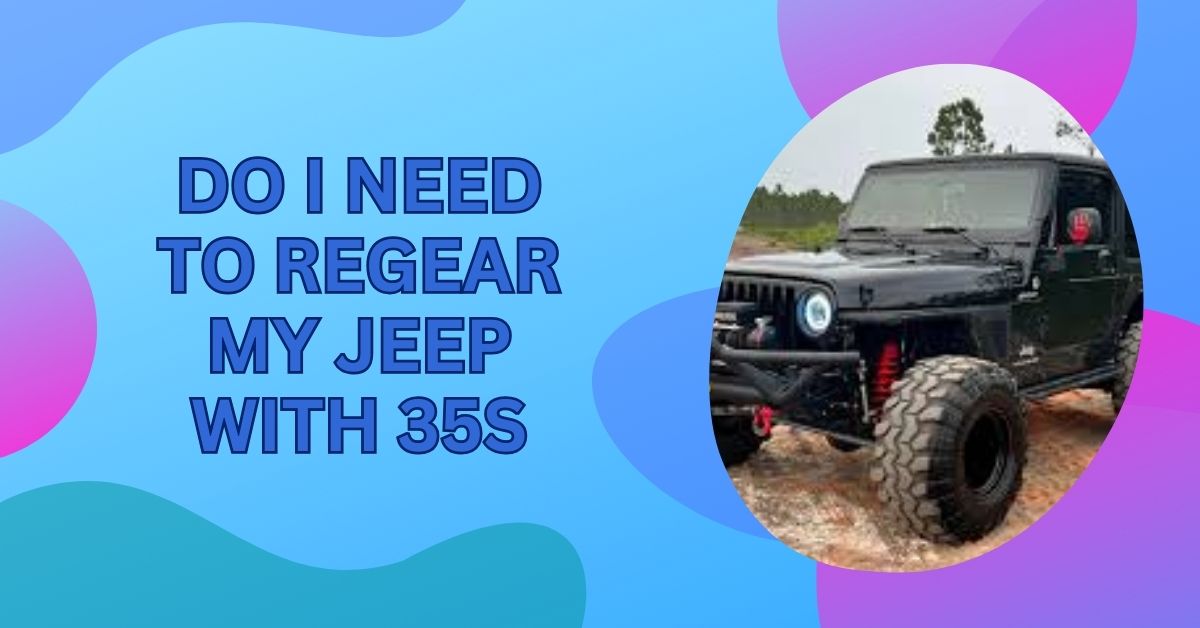




0 Comments